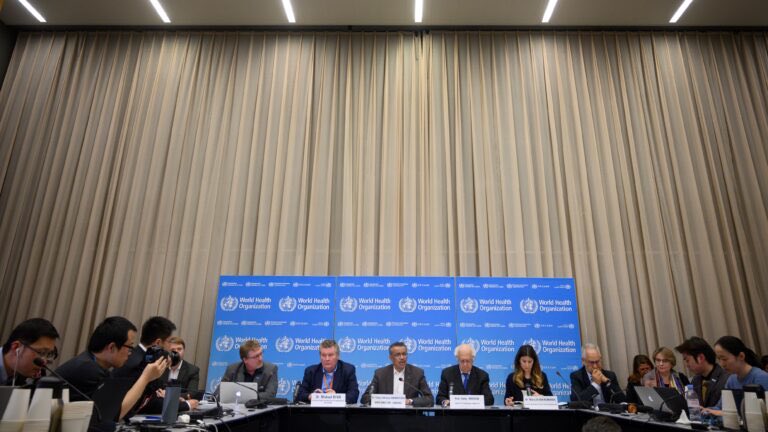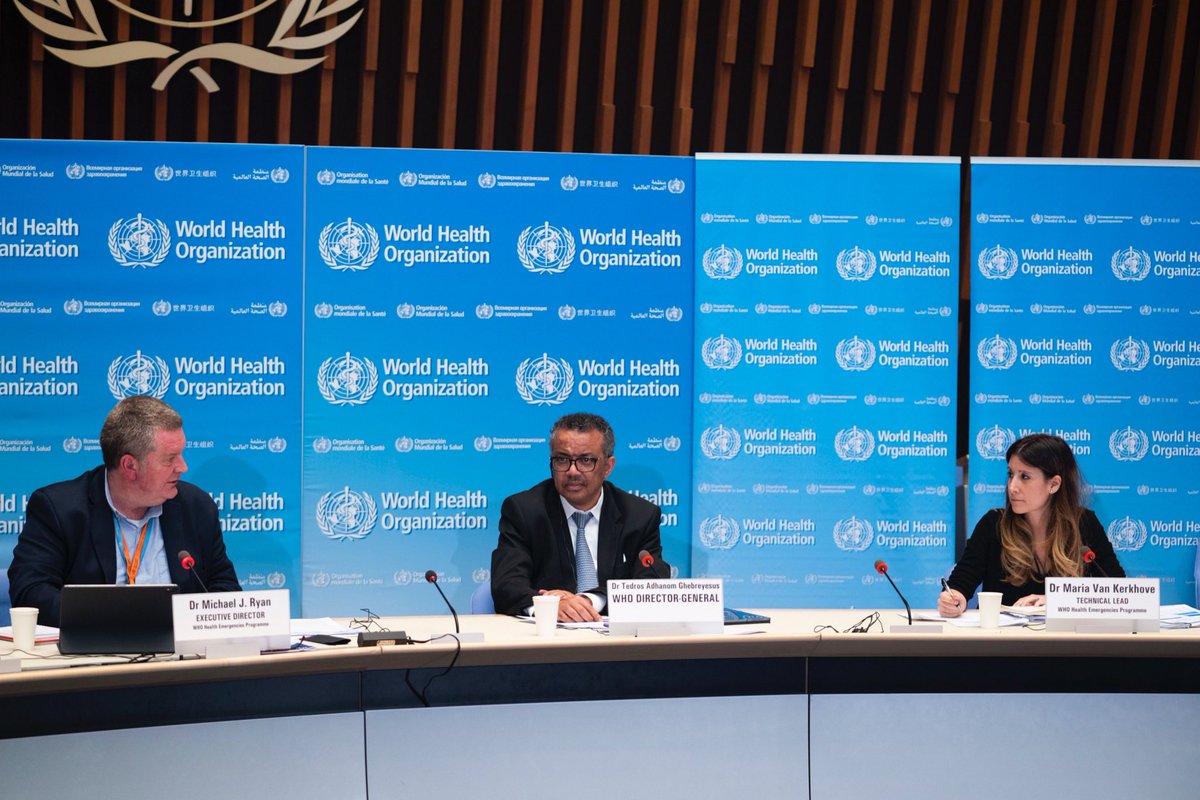Long🧵 #COVID19 and where we are. I’m worried.
We are entering the 5th year of the pandemic and we are certainly in a different phase. This phase is marked by an evolving virus (with the XBB and BA.2 sublineages circulating and JN.1 becoming dominant).
We are entering the 5th year of the pandemic and we are certainly in a different phase. This phase is marked by an evolving virus (with the XBB and BA.2 sublineages circulating and JN.1 becoming dominant).
https://x.com/mvankerkhove/status/1741004975625384164?s=46&t=Y2QfmPP5_zrnNTfhB8dcmw
It’s marked by reduced impact compared to the peak of #COVID19 a few years ago, but it’s still a global health threat and it’s still a pandemic causing far too many (re)infections, hospitalisations, deaths and long covid when tools exist to prevent them.
data.who.int/dashboards/cov…
data.who.int/dashboards/cov…
It’s marked by co-circulation of many other pathogens eg flu, mycoplasma, RSV, etc.
Cases and hospitalisations for #COVID19 have been on the rise for months. Hospitals in many countries are burdened and overwhelmed from COVID and other pathogens, and deaths are on the rise.
Cases and hospitalisations for #COVID19 have been on the rise for months. Hospitals in many countries are burdened and overwhelmed from COVID and other pathogens, and deaths are on the rise.
It’s marked by complacency. I will never accept that there is an “acceptable level of dearth” (something I’m asked) for #COVID19.
We are talking about people, parents, children, people who laugh, love, dream
I wrote this last March and this still applies
We are talking about people, parents, children, people who laugh, love, dream
I wrote this last March and this still applies
https://x.com/mvankerkhove/status/1634485371785338882?s=46&t=Y2QfmPP5_zrnNTfhB8dcmw
Governments must not be complacent, individuals must not be complacent. We have all gone through something traumatic with #COVID19. The world shut down, we lost millions of our loved ones, billions have been personally affected by COVID. We cannot forget. @WHO will not forget
The legacy of #COVID19 must be strengthened health systems, with agility to scale up and down, to protect communities and health workers, improve the air we breathe, to provide access to safe, reliable & affordable PPE, tests, treatments & vaccines to ALL people in ALL countries.
To ensure we have comprehensive surveillance & sequencing systems that allow robust risk assessment to inform & empower people with good info. To protect & advance science. To support scientists & innovation & accept that as we learn, we change, we adjust, we course correct.
I’m worried that too many think #COVID19 is not something to worry about, that they need a new variant with a Greek letter to take this virus seriously. When we need to assign a Greek letter, we will not hesitate.
I’m worried we so badly want to move on that govts, many of whom have new leadership and have moved on, will forget the overflowing hospitals, the tents in parking lots for the sick, refrigerated trucks serving as morgues, burial grounds, fire pyres, exhausted health workers…
We can’t forget those who died alone and the people dying now- thousands each week. The hundreds of thousands in hospital right now fighting for their lives. Those suffering from #LongCOVID struggling each and every day….
These memories -still fresh- need to fuel & finance better health systems, equity, pandemic preparedness for current (#COVID19) & future threats IN THE CONTEXT of all of our other challenges of war, displacement, climate change. We have to do better. It’s hard. #PandemicAccord
As individuals, we are mourning, we are trying to heal, we are dealing with our own mental and physical health - I am trying to work on mine too - because what we went through was not “normal”.
The #COVID19 pandemic was not normal. It didn’t have to be this bad… and this wasn’t even the worst pandemic we need to prepare for.
So let’s talk the positive and the future because, while I’m worried, I’m also hopeful and optimistic.
So let’s talk the positive and the future because, while I’m worried, I’m also hopeful and optimistic.
I’m inspired by science, by innovation, by spirit and drive, by health workers and by my @WHO colleagues who - every single day - are on the front lines helping people whether this is in war zones or driving scientists to address unknowns to provide health solutions for people.
I’m grateful for science and innovation of PPE, improving ventilation, improving trust and communication, diagnostics, medications and clinical care, vaccines,
I’m thankful for the global advancements in surveillance, PCR & sequencing capacities, IPC, clinical care, emergency…
I’m thankful for the global advancements in surveillance, PCR & sequencing capacities, IPC, clinical care, emergency…
…medical teams, vaccine delivery, supply chain management, risk communication, community engagement and infodemic management, mass gathering management, emergency operations and coordination, R&D, etc.
These advancements must be maintained to deal with #COVID19 and all pathogens that have epidemic and pandemic potential: flu, dengue, mpox, cholera, nipah, Marburg, Ebola, RVF, CCHF, plague, MERS-CoV … and the next disease X.
I’m optimistic because of the good in people around the world despite the challenges we face. I’m optimistic because of the good in my colleagues @WHO led by @DrTedros and @DrMikeRyan.
@WHOWPRO @WHOEMRO @WHOAFRO @pahowho @WHO_Europe @WHOSEARO @rd_blueprint @WHOGOARN @UN …
@WHOWPRO @WHOEMRO @WHOAFRO @pahowho @WHO_Europe @WHOSEARO @rd_blueprint @WHOGOARN @UN …
About a year ago, I ended a talk @rpi with 4 questions and most of my talks now are structured around versions of these questions:
https://x.com/mvankerkhove/status/1651297487733260318?s=46&t=Y2QfmPP5_zrnNTfhB8dcmw
1) Do you remember? Do you really remember the first time you heard of this virus, this cluster of pneumonia in China? The fear of the unknown? The waiting for patients to reach your hospitals?
2) What will you do different? The next time … because it will happen again?
2) What will you do different? The next time … because it will happen again?
3) How will your work contribute now and for the next one? In whatever role you have… Because each of you played a role in this one and will in the next…. Thank you for your work.
4) How can you do better? I ask myself that every day, and I get up and try. @WHO is a learning organization and we have incredible people who work so hard - with the abilities provided to us by our member states - every. single. day.
We make mistakes. I make mistakes. But I get back out there every day and try to do better.
I’m in the arena. This is a huge responsibility I take seriously.
Last question: what are you doing? Your life is precious. You have so much to contribute.
I’m in the arena. This is a huge responsibility I take seriously.
Last question: what are you doing? Your life is precious. You have so much to contribute.
Make a positive difference. Be kind. Stay alive. Live a happy, healthy and fulfilled life
Thank you health workers. Thank you public health professionals and scientists. Thank you community and youth leaders. Thank you CSOs and @WHO partners. Thank you all
Happy 2024 everyone!
Thank you health workers. Thank you public health professionals and scientists. Thank you community and youth leaders. Thank you CSOs and @WHO partners. Thank you all
Happy 2024 everyone!
• • •
Missing some Tweet in this thread? You can try to
force a refresh








